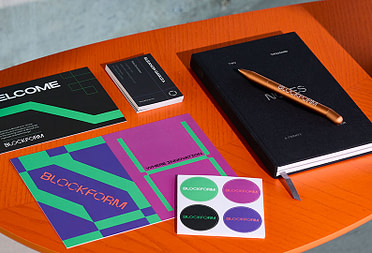Developing the right tone of voice values for your brand

To truly work its magic, your brand’s tone of voice needs to be accessible to everyone in your company. Here’s how to define values that work for your whole team.
We’ve blogged before about the value of a great tone of voice, and how to use tone of voice on social media. But what about those building blocks at the heart of your tone of voice, your tonal values? What are they, where do they come from, and how do you find the right ones for your brand?
More importantly, how can you make sure they’re useful enough to become part of your team’s everyday toolkit?
Choosing your values
Your tonal values are the ‘personality traits’ that make up your tone of voice. Although there’s technically no maximum or minimum for the number of tonal values you can have, it’s a good idea to stick to 4 or 5 so that you can remember them easily and still get a range of traits to play with in your messaging.
Before you get started, it’s important to know that tonal values describe how you sound, not how you think, feel or behave. This is an important point, as it will set your tonal values apart from your brand values. It also helps make sure your tonal values are as practical and useful as possible.
Think about the kind of words you use to describe someone’s language and personality style. ‘Chatty’, ‘playful’, ‘helpful’ and ‘reassuring’ could all work well as tonal values. So could ‘formal’, ‘respectful’ and ‘straightforward’.
‘Stylish’, ‘aspirational’, ‘edgy’, ‘cool’ and ‘immersive’ are examples of values less suited to tone of voice. Although they could work as tonal values, but they’re a bit less focused and more open to interpretation, which will make them trickier to define.
Action plan:
- In a group or with your whole team, collect as many words as you can think of that describe how your brand sounds, or would like to sound. Capture them on a whiteboard, on Post-it notes or a flipchart where everyone can see them.
- Once you have your long-list of values, you can invite people to vote on the ones they think best relate to your brand voice. You don’t have to narrow down the top 4 or 5 at this point, just get an idea of what’s most popular.
- It’s a good idea to have one person who is guiding the process and helping to steer the group through any indecision. They can help identify potential values that are similar to each other (where you don’t need both) and weed out any values that are less tonal and more brand-like.
Differentiating your tone of voice from competitors
Part of the reason for having a great brand tone of voice is that it sets you apart from other companies. So when you’re choosing your values, it’s worth having a think about your main competitors. How do they sound? Is there a general trend in your industry for a certain tone? Could you break the mold by sounding a bit different?
Action plan:
- As a group, note down your main competitors and review their tone of voice. Using a projector and a laptop to bring up their websites and social media sites can be handy for this process.
- Notice any common themes that come up. Are they similar to each other? Do you see any similarities with the long-list of tonal values you came up with for your own company?
- Going back to your original long-list, look for values that stand out as being different from the competitors. Did any of them get a high number of votes from the team? If so, they’re promising candidates! Mark them with a star.
- Now it’s time for the final vote… get everyone to choose up to 3 tonal values and tally up the scores to find your final 4 or 5.
Defining your tone of voice values
Now you’ve got your values, you need to flesh them out and define what they mean to your business. It’s really important to do this because everyone will have their own interpretation of what each value means. If you don’t make the meaning specific, the tone of voice won’t be as unified and clear as you want it to be.
Action plan:
- Give each tonal value a short statement that explains what it means in the context of your business. This is probably a job for one person to do rather than in a group, although you can get group feedback and make changes as many times as you need to to get it just right.
- Keep your statements short and sweet – a single sentence is enough. Make sure all your tonal values and statements will fit on a single A4 page. This way it can be a helpful at-a-glance reference, and not a document that feels onerous or time-consuming.
- Write as though you’re talking to someone who works at your company. For example, if the tonal value is ‘helpful’, the statement could be – ‘we put ourselves in the customer’s shoes and give them the information they need.’
Getting your team on board
When your tone of voice is brand new, your team should be comfortable and familiar with it, as they will have helped build it. But what about onboarding new staff or refreshing people’s knowledge after some time has passed? Here are a few ways to embed tone of voice in a memorable way.
- Build a tone of voice toolkit with helpful tips and examples of your tone of voice in action. This document can be handed out as part of your onboarding welcome pack.
- Hold a workshop where you use the company tone of voice to spruce up some basic messages. Invite people to write new versions – even if it’s not normally part of their job.
- Gamify your tone of voice with a company tone ‘hall of fame’ – an ongoing contest that recognizes great examples of your tone of voice in action. You could even award a monthly prize for the best ones.
Flip your tone of voice around by setting new team members the task of writing in the opposite of your tone of voice. For example, with values like ‘helpful’ and ‘positive’, get them to write something that’s deliberately unhelpful and pessimistic. This will help drive home the difference a good tone of voice can make.
Looking for more tonal tips? Here’s how to decide how your brand should sound on social media
Keep in touch
Get design inspiration, business tips and special offers straight to your inbox with our MOOsletter, out every two weeks.







